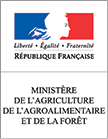- Transforming rural livelihoods and landscapes: Sustainable improvements to incomes, food security and the environment
- Sustainable development goals
Climate smart agriculture and the landscape approach are two complementary strategies in support of the implementation of national adaptation strategies for the agricultural sector. They offer strategies to achieve national plans for mitigation in the land use, land use change and forestry (LULUCF) sector while helping to reduce land degradation, poverty and increase food and nutrition security.
The formation of the Association of International Research and Development Centers for Agriculture (AIRCA) in 2012 was stimulated by the need for integrated action to deliver sustainable agricultural intensification at the landscape scale. The nine-member alliance is focused on increasing food security by supporting smallholder agriculture and rural enterprise within healthy, sustainable and climate-smart landscapes.
In this session we will present examples of how AIRCA members have developed different aspects of climate-smart agriculture (CSA) and how this has contributed to healthy landscapes and improved livelihoods.
We will start by explaining the concept of healthy landscapes and the role of CSA in achieving them (Dr. Nicholls of CABI). Then we will discuss different approaches to CSA and healthy landscapes as implemented by AIRCA members in Africa, Asia and Latin America, as well as their experiences on opportunities and challenges for scaling up their approaches beyond the project level.
Based on this discussion we will highlight some of the benefits of this approach, in particular in relation to nine of the Global Development Goals; we will highlight some of the challenges ahead and make specific recommendations for policy makers to help them develop strategies to operationalize CSA and a healthy landscapes approach.
After a brief introduction on AIRCA by its current president Dr Dyno Keating of AVRDC, the session will kick off with a 15 minute presentation on the conceptual approach towards healthy landscapes and CSA by Dr. Trevor Nicholls of CABI. A small panel of three directors of research institutes will discuss their experiences with this approach in three continents: CSA and Climate Smart territories in Central America by Dr. José Joaquín Campos Arce of CATIE, CSA and Climate Smart Villages in Nepal by Dr. Eklabya Sharma of ICIMOD, and the role of bamboo in CSA and landscapes by Dr. Hans Friederich of INBAR. After that, there will be an open exchange with the audience. The session will be moderated by Dr. Ismahane Elouafi of ICBA.
Dr. Campos Arce will highlight the importance of collaborative intelligence as expressed by the collective impact that results from actions of many stakeholders working together, guided by a shared vision for the landscape and supported by the enabling conditions created by effective participatory governance for adequate decision making and conflict management, linking them with policies and institutions at the national scale. He will show its importance also for the implementation of other elements of CSA such as technologies (ecosystem based mitigation and adaptation), equity and knowledge management.
Dr. Sharma will show ICIMOD’s experiences with the Climate Smart Village approach, where approximately 80% of the work is related to CSA, applying for example biopesticides, biofertilizers and biogas plants to both reduce emissions and increase resilience to climate change while improving productivity; with another 20% dedicated to improving its links with ecosystem services such as the hydrological services in a watershed through appropriate land management and increased water harvesting.
Dr. Friederich will show from examples in Africa and Asia that bamboo is potentially an important component of a landscape approach for climate-smart agriculture, providing a source of fodder, income, building material and more. Bamboo can also help to maintain slope stability and reduce erosion and field runoff, thus protecting fertile soils from washing down slopes into waterways.
Some of the challenges that will be discussed are the scaling out and up of the experiences, beyond the farm and landscape level to broad adaptation of the practices and approaches. These challenges include socioeconomic and political inter-scale interactions; value chains that recognize climate smartness; weather based crop insurance; and access to appropriate and effective technologies and knowledge.
Key questions addressed
- Why is CSA important? What are its major expected benefits compared to other approaches?
- What are the main barriers and opportunities for scaling up CSA as a tool to achieve healthy landscapes? What are its challenges in the short and medium term?
- What is the main recommendation we could give to national governments to assist them in scaling up CSA and healthy landscapes?
Background reading
Climate-Smart Landscapes: Multifunctionality in Practice (p. 75-87)
Climate Smart Villages: Building Affordable and Replicable Adaptation Pilots in Mountain Areas
AIRCA White Paper: Transforming rural livelihoods and landscapes






































